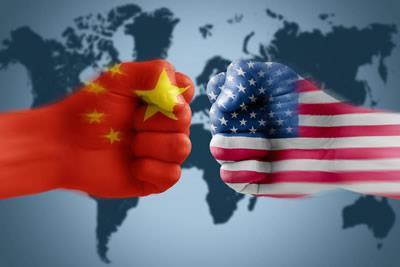
India poised to benefit from US tariff hikes on Chinese products : Experts
NEW DELHI : US President Joe Biden‘s plan to levy high tariffs on a host of Chinese products, including electric vehicles (EVs), batteries, and medical supplies, will likely benefit Indian exporters, government officials and trade experts believe.
Higher duties on Chinese face masks, syringes, needles, medical gloves and natural graphite could aid Indian exports of these products. By scaling up production and exports of these sough-after products, India stands to boost its presence in the US market, they said.
The White House on Tuesday hiked tariffs on Chinese EVs from 25% to 100%, the doubled levies on solar cells from 25% to 50%, and tripled the duty on certain steel and aluminium products from 7.5% or less to 25%.
Tariffs on non-lithium-ion battery parts shipped from China to the US will also increase from 7.5% to 25%. Previously untaxed Chinese items such as face masks, critical minerals, and ship-to-shore cranes will now be subject to a 25% tariff.
Washington has reportedly said that these tariffs will hit an estimated $18 billion worth of imports from China.
“It will certainly open gates for Indian products in the markets of developed economies,” said a senior government official, who wished not to be named.
“The US is one of the major export markets for most Indian goods, such as diamonds, medical appliances and accessories, agricultural products, refined petroleum, rice, textiles, and apparel, among others.”
That said, experts also cautioned about the possible dumping of Chinese goods in India. With the US and EU facing reduced imports of Chinese EVs due to tariff hikes, Beijing might divert these products to other markets, including India.
Opportunities for India
“Certain medical products, including PPE kits, syringes, gloves, and others, will enter the US market. India’s position as the second-largest producer of PPE kits, masks, face masks, syringes, needles, and medical gloves will give us a significant advantage, allowing us to benefit from this opportunity,” said Mr. Ajay Sahai, Director General of the Federation of Indian Export Organizations (FIEO).
To be sure, India is not a leading manufacturer of every Chinese item now facing a tariff hike – China, for instance, is the world’s largest manufacturer of EVs, whereas Indian EV production is negligible.
However, the story may be slightly different for some other items. In March 2024, exports of medical plastics, including syringes, catheters, cannulae, and spectacle lenses, surged by 10.4%, reaching $48.7 million from $44.1 million in March 2023.
India has the potential to ramp up its manufacturing capacities in certain segments to tap into opportunities resulting from the high tariffs imposed by the US on Chinese products, making them less competitive, Mr. Sahai said.
He also added there were potential export opportunities in aluminium and steel.
In FY24, Indian exports to the US saw a marginal decrease of 1.32%, totalling $77.5 billion compared to $78.54 billion in 2022-23. Simultaneously, imports from the US declined approximately 20%, amounting to $40.8 billion, according to data from the commerce ministry.
Implications of US-China trade tensions
“These proposed increases are a part of the US’s broader strategy under Section 301 of the Trade Act of 1974, aimed at combating what it deems as unfair trade practices by China,” said Mr. Ajay Srivastava, the founder of Global Trade Research Initiative (GTRI).
Katherine Tai, the US Trade Representative, emphasized that these measures are necessary to counter the flooding of global markets with low-cost Chinese products.
In 2023, the US imported goods worth $427 billion from China and exported $148 billion, highlighting a significant trade imbalance.
However, the GTRI said the proposed tariff increases exceed the US’s bound duty commitments at the World Trade Organization, potentially violating WTO provisions. “The US has increasingly justified these increases under the rarely used National Security clause.”
“Developed countries, including the US and EU, are increasingly embracing protectionist measures through routine tariff increases that exceed their WTO commitments and substantial subsidy programs aimed at boosting local production. This shift signals a prioritization of industrial policy over trade policy, reflecting a broader trend towards economic self-reliance,” GTRI’s Srivastava said.
“The new tariffs are another hit to supply chains as they try to manage ongoing risks and build resiliency. Whenever tariffs are increased, regardless of the rationale for doing so, the impact goes beyond cost increases to companies and consumers,” said John Donigian, Senior Director of supply chain strategy at Moody’s.

